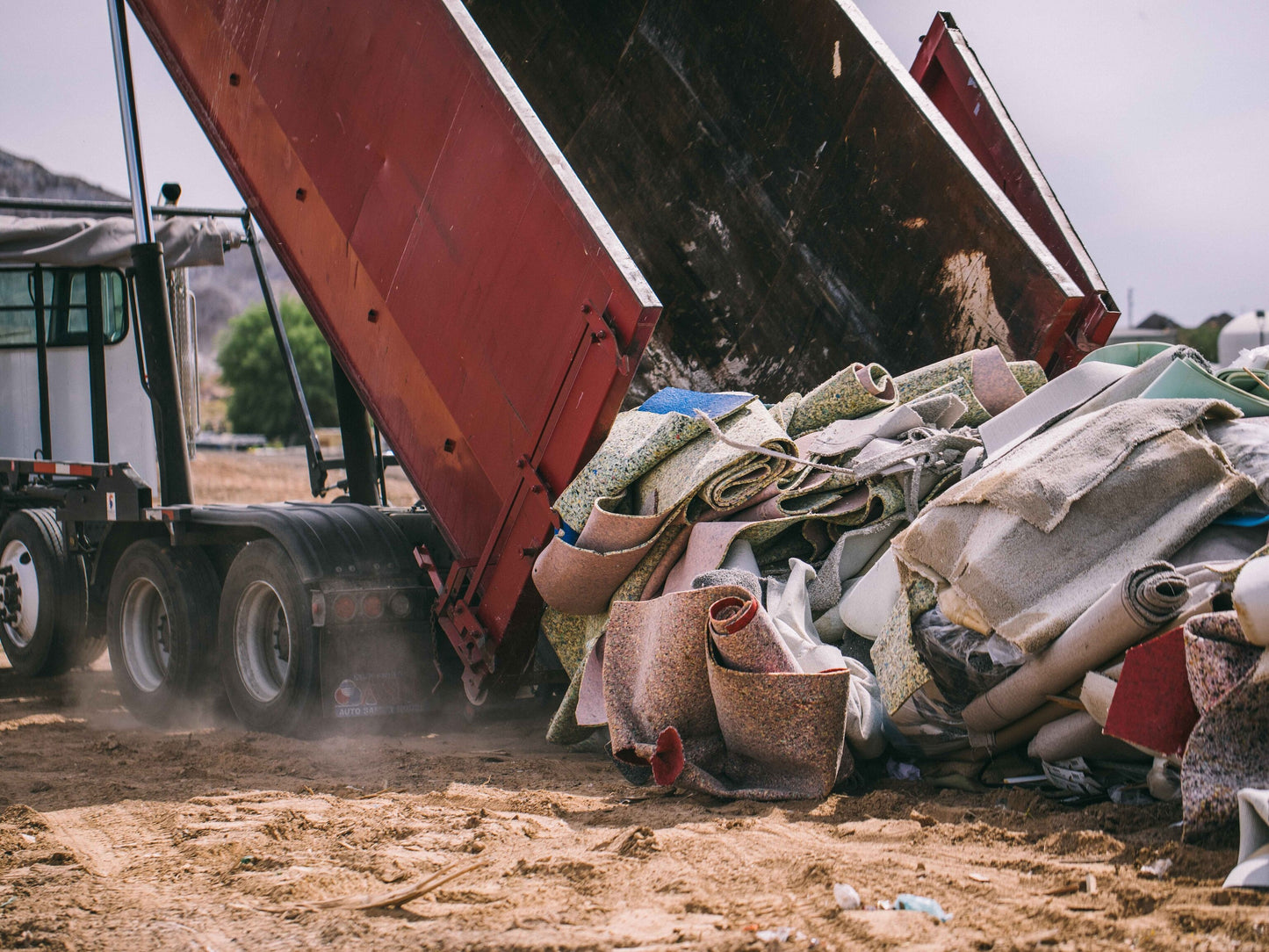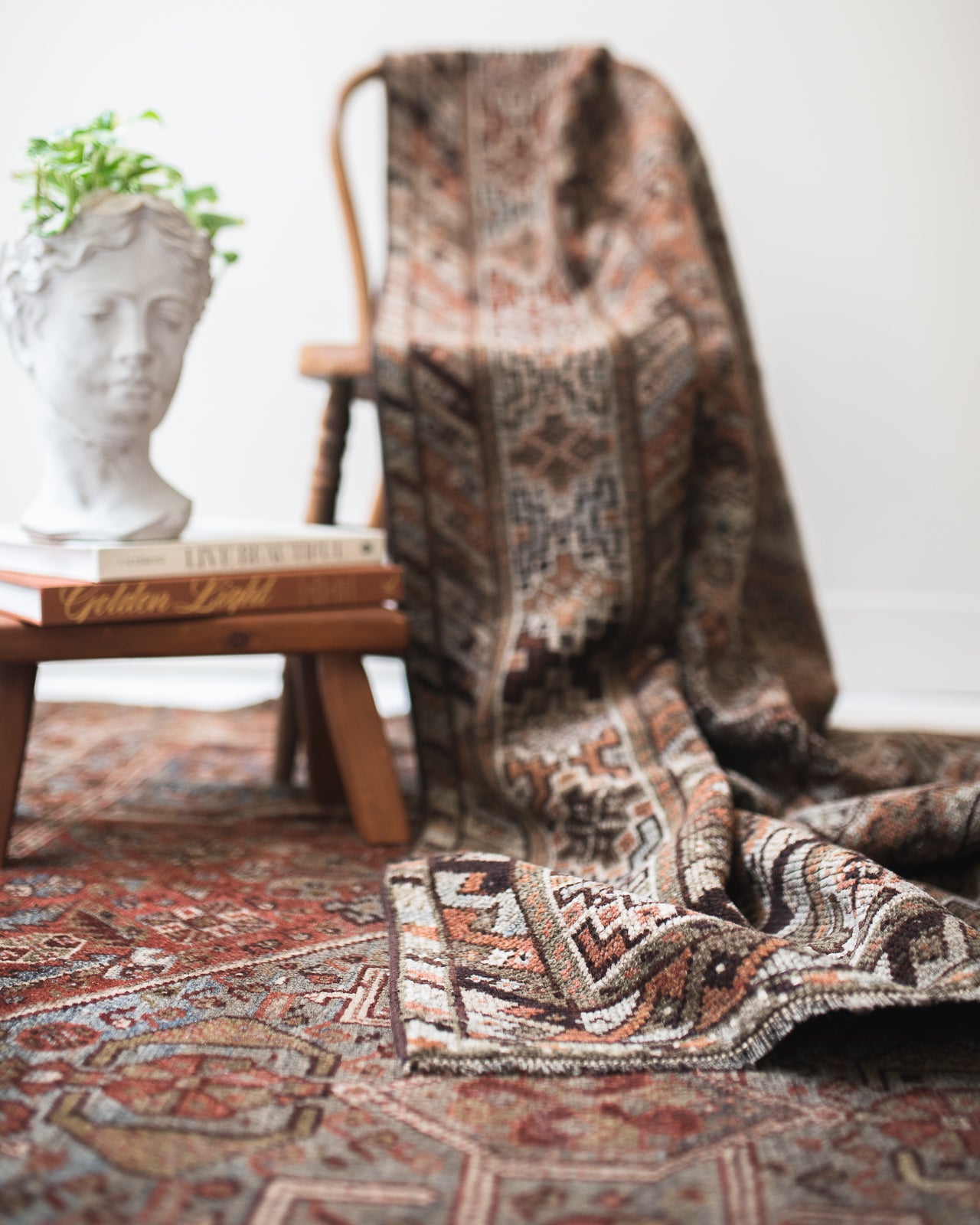
Dear Insiders,
Let's dive deep into the world of machine made and mass produced rugs and tell you why vintage rugs are a great starting point for sustainable home decor. We know greenwashing can make it hard to know what “sustainable” attributes are genuine or a half-truth these days, and no one wants to spend more money than they are able to; this is our introductory guide to just how sustainable and non-toxic vintage rugs are and why they’re worth the investment against synthetic mass produced options. If you’re already a convert, don't worry, we’re also going to walk you through the best habits and non-toxic products for rug upkeep and cleaning.
So, why should you really invest in a vintage rug?
Let’s be real, furnishing and designing a home can be a huge cost, and we all want to have the beauty of luxury on a budget, right?! Unfortunately for us, the structure of mass production often means that when we save money, we pay the difference with our planet's health and even our own. So we guess the short answer is: vintage rugs are a sustainable, non-toxic investment for your home that will last you for generations. Yup, you guessed it, vintage rugs are not only giving a second life to a masterpiece of a craftsmanship, but their natural vegetable dyes and materials are nontoxic and last a lifetime. Meanwhile, the average lifespan of a machine made rug is about 20 years or less, not to mention the harmful production process and its effects on the earth. See glossary at the end for toxic terms.
What makes a carpet or rug toxic or unsustainable?
That “new carpet smell”, yeah that’s called outgassing and your lungs want nothing to do with it, gross. The majority of rugs manufactured in the US are not only produced in a way that is harmful to the environment, but are made of, or treated with chemicals that can pollute the air in your home. Additionally, in 2014, 89% of post-consumer rugs ended up in landfills, where synthetic materials take years to break down, contributing to methane emissions and leaching chemicals into our soil and water. Only 1% of the waste was salvageable to be recycled back into the carpet industry.
What makes vintage rugs non-toxic?
Aside from the fact that vintage rugs are pre-loved, they are also cleaned and repaired by hand with natural dyed wool. All of our vintage rugs are hand-knotted from all natural materials, mostly wool and cotton. The wool is hand spun and dyed from materials traditionally sourced in their country of origin, often using vegetables or plants local to that region. It is even common for rug weavers to source their wool directly from their own sheep! You may ask, “well, what if a vintage rug ends up in a landfill?” – the beauty of wool and cotton is, they are naturally biodegradable!
Cleaning your vintage rug can also be easily done with non-toxic products, such as Molly's natural detergent, and an all-natural rug pad from Rug Pad USA will help preserve your rug overtime. We also strive to ship all of our products plastic free; using all recyclable or compostable materials and offer local pickup and delivery!
At the end of their life cycle, our vintage rugs can be easily broken down and recycled compared to the synthetic materials and chemicals used in contemporary and mass produced carpet and rugs. Vintage rugs can be reused in so many creative ways, they never need to be tossed into a landfill. If you find yourself with a vintage rug beyond repair, maybe something grandma passed down to you and you have no idea what to do with it, try some of our favorite DIY’s to give your rug a new life. We love cutting salvaged rug fragments and turning them into fun textile rug art, all you need is a pair of fabric sheers and your favorite frame and voila, framed rug art! A more challenging project, one we’ve personally taken on ourselves, try reupholstering your favorite Facebook Market place find with a vintage rug! A classic upholstered bench is our favorite beginners project, or if you’re looking for something a little simpler, turn your rug fragments into an easy sewing project! You can easily add some character to your favorite denim jacket by hand sewing some rug fragments as patchwork art!
From The Souk to You,
Minimal Chaos

Toxic Terms Glossary:
- Synthetic materials ex: polypropylene (also known as olefin or polyolefin), nylon, and polyester can transfer chemicals from their production process
- Stain repellents applied to synthetic or natural materials to aid in cleaning, these are often made from potentially harmful perfluorinated compounds (PFCs)
- Flame retardants are often used ineffectively to treat synthetic or natural fibers and are highly toxic
- Backing materials that can include “endocrine-disrupting ingredients”, synthetic rubber pads and glues containing formaldehyde
- High impact dyes with toxic ingredients harmful for your skin, lungs and the environment
- Phthalates: “Found in flexible plastics and fragrance chemicals, phthalates are also commonly used in the backing material of carpets. Six types of phthalates were found in carpets. Four, (DEHP, DBP, and BBP) are classified as being toxic to reproduction, acutely toxic to aquatic life, bioaccumulative, and toxic to human health. The other three (DINP, DIDP, and DNOPs ) are suspected of being toxic to reproduction, endocrine disruptors, and developmental toxicants.*
- Heavy metals: “the dirt and toxins brought in on your shoes- Some heavy metals such as lead or cadmium are neurotoxins, impair human fertility and/or cause harm to unborn children.”*
- Nonylphenols (NPs) and NonylphenolEthoxylates (NPEOs): “surfactants that have been phased out of cleaning products in the EU due to their hazard profiles, but are still being used as adhesives in carpet backing. These chemicals are “endocrine disruptors”*
Natural Material Glossary:
- Wool, cotton, silk: Minimal Chaos rugs are reused so the biodegradable wool is not newly produced or treated with harmful or synthetic materials, although this is often the case with newer made rugs especially in the US
- Hand knotted: Minimal Chaos rugs are made by artisan weavers, they are not mass produced by machines that have harmful byproducts and emissions
- Vintage: Minimal Chaos rugs are usually in the age range of 20-100 years old
- Eco-plush rug pad: 100% recycled felt pad with no adhesives chemicals or odor
Additional Sources and Helpful Resources:
- https://www.no-burn.org/wp-content/uploads/SWEPT-UNDER-THE-CARPET_high-res-DECEMBER-2016.pdf
- https://www.no-burn.org/wp-content/uploads/SWEPT-UNDER-THE-CARPET_high-res-DECEMBER-2016.pdf
- https://epha.org/wp-content/uploads/2018/03/Toxics_in_Carpets_EU_Review_Anthesis_Final.pdf
- https://www.no-burn.org/wp-content/uploads/SWEPT-UNDER-THE-CARPET_high-res-DECEMBER-2016.pdf
- https://www.catalinarug.com/blog/how-to-vacuum-your-oriental-rug/
- https://www.leafscore.com/eco-friendly-living-products/rugs-what-to-watch-out-for/
- https://www.nationalgeographic.com/environment/slideshow/partner-content-recovering-arizonas-rugs












